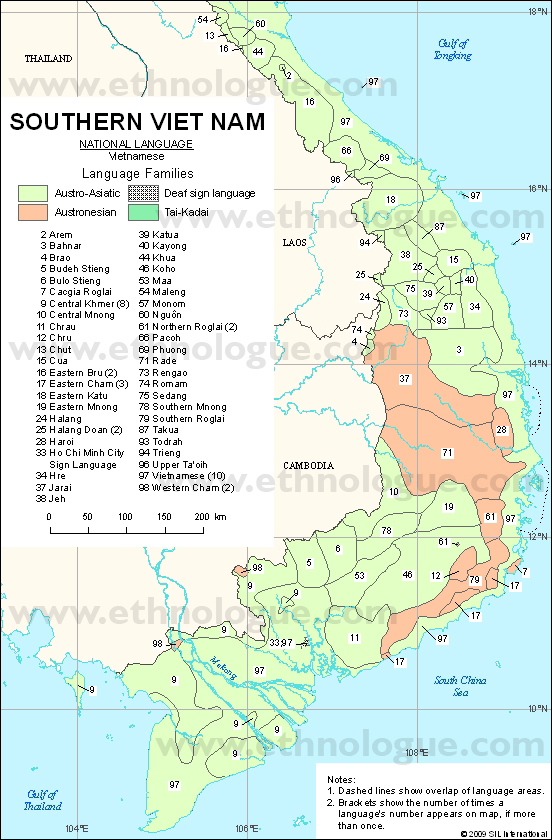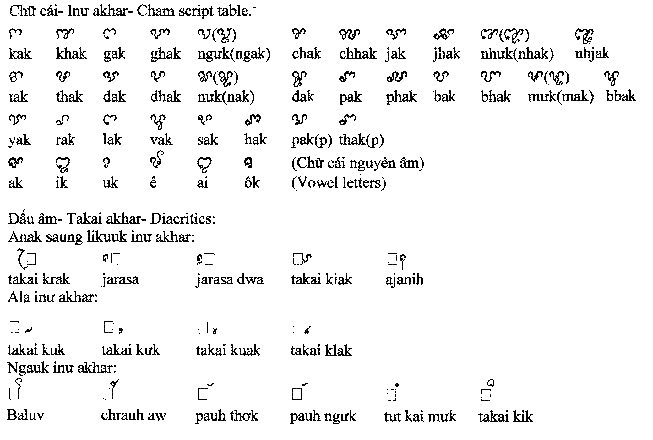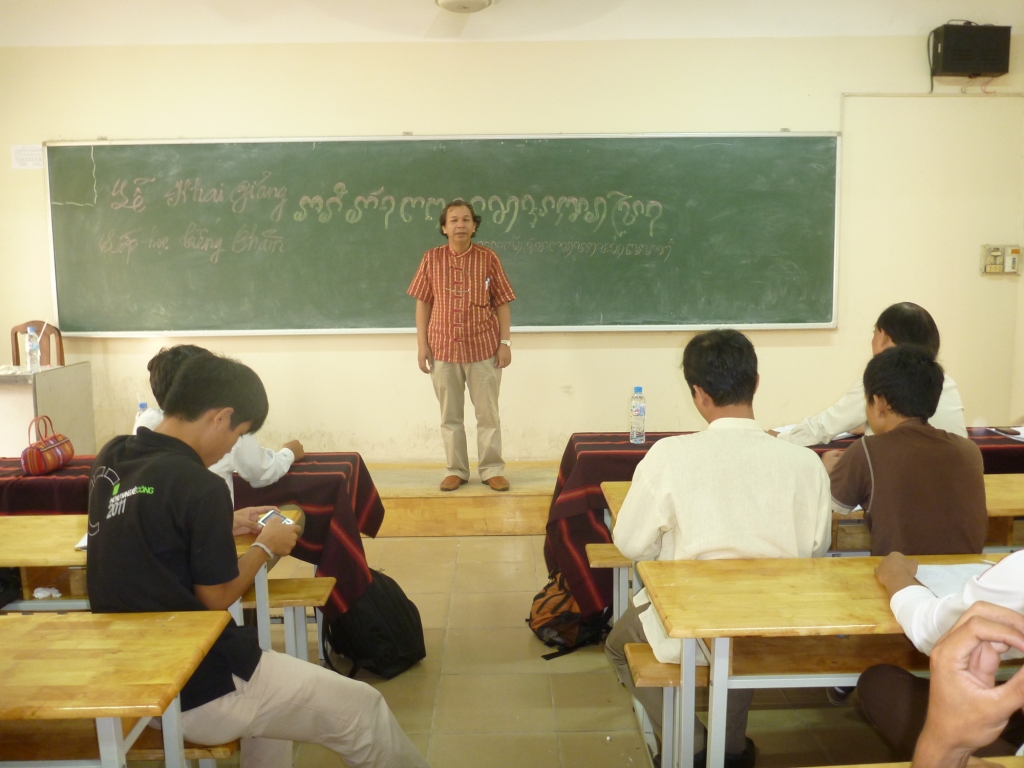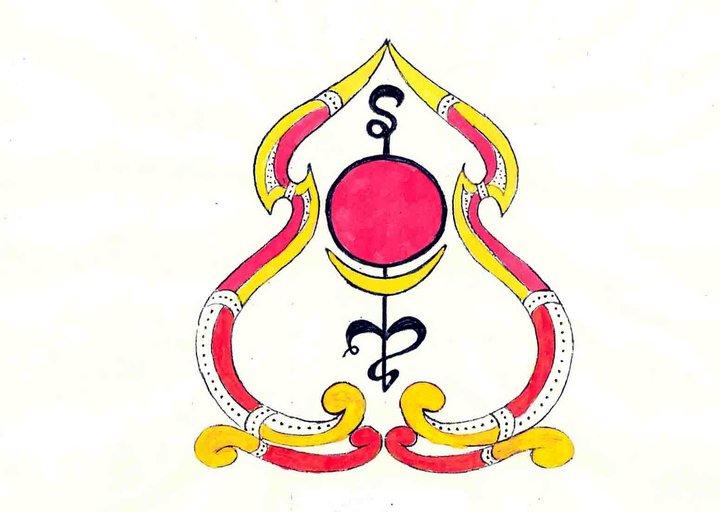
|
ldtc@hawaii.edu 1890 East-West Rd., Honolulu, HI 96822 USA |
LDTC Home | About LDTC | People | Languages | Workshops | Support |
|
|
About Me and My Language
| Salam, My name is Isvan, a Cham in Vietnam. I am a graduate student in Anthropology department of University of Hawaii at Manoa. I have been in Hawaii more than one year. When I wrote an article about leaning and teaching Cham language for the Cham students in Ho Chi Minh City 3 years ago, I was wishing that I could write or make some things for my language. The idea of building a mini website for anyone who want to know the Cham culture and language has risen in my mind. Currently, I
participate in LDTC (Language Documention Training
Center), It is a good chance for me to be trained and It
makes me more confident to create a website to
provide information of my Cham
language.
Ndua Dhanphuen |
| Your name |
Quang Dai Tuyen (a Vietnamese
name), Isvan (a Cham name) |
| Contact Email My page |
nangphanrangnt@gmail.com click here |
| Preferred name(s) of your language | Cham |
| Alternative names | Eastern Cham, Western Cham |
| Language classification | Autronesian, Western Malayo-Polynesian, Sundic, Malayic, Achinese-Chamic, Chamic, South, Coastal, Cham-Chru. |
| Geographical areas where spoken | Ninh Thuan, Binh Thuan, Phu Yen, Binh Dinh ( Eastern Cham), An Giang, Tay Ninh, Saigon (Western Cham) in Vietnam , the Kampong Cham and Kampong Chhnang provinces in Cambodia; Hainan ( China), and some areas in Southeast Asia such as Malaysia, Indonesia, East Timo, Thailand. |
| Approximate number of monolingual speakers | 5% of 200,000 speakers ( in
Vietnam), unknown in Cambodia |
| Other languages spoken in the area/country | Vietnamese, Raglai |
| Official language(s) in your country | Vietnamese |
| Does your language have a
widely accepted writing system? |
the Cham has a writing system |
| If yes, what materials are
written? |
schoolbooks, dictionaries |
| back to top | |
| Background of the Language This project focus on the Eastern Cham in Vietnam, because I have no chance yet to investigate the general information of the Cham in Cambodia and other areas in Southeast Asia. I will briefly provide information about the Champa and Cham in term of history, geography, people, and culture as well as language. 
You maybe first
hear about the Champa Kingdom, and that for a simple reason:
it has ceased to exist centuries ago, absorbed by the
Vietnamese definitely in 1832. Before that, it had remained
more or less in dependant despite regular fights against its
immediate neighbors Cambodia and Vietnam, and the great
influence exerted by the two great powers of the continent,
China, and in the distance, India. References: The Indianized States of Southeast Asia, G. Coedes, 1968 Status of the Latest Research on the Absorption Of Champa by Viet Nam, Po Darma, Proceedings of the Seminar on Champa, 1988 People: According
to
Cham legends, the Champa kingdom was controlled by two
clans: the areca clan or male clan, called Pinang in the
Cham language belonging to the mountain line of descent
(Atuw Cek) that controlled the northern region; and the
Coconut clan or female clan, called Li-u in the Chăm
language belonging to the sea line of descent (Atuw Tasik)
that controlled the southern region (Maspero
2002:23; Tran Kỳ Phuong 2006:6). The
people of the Champa kingdom belonged to two language family
groups: the Austronesian (including Cham, J'rai, Ch'ru,
Rahde and Raglai) and the Austroasiatic (including K'tu,
Bru, K'ho, H're, Sedang, Bana, Mnong, Stieng, Mạ, etc.)
(Darma 1999:2). The Cham maintained an Austronesian language
spoken from at least the fourth century CE (Thurgood
1999:3-4). The most prominent ethnicity is the Cham who
today still remain many annual rituals at the tower temples
in Southern Central Vietnam. They are also known as Chiem,
Chiem Thanh, Hời or Prum who is identified as the indigenous
inhabitants and has the oldest settlements in this region. Many
researchers or Vietnamese people misunderstood while they
use the term Cham to assign to the Champa people. In fact,
this term was completely forgotten in the ethnic language of
the Highlands, and never appeared in any inscription or in
any ancient text of the Champa kingdom. It is often used to
refer to the Champa people. In particular, Orang Champa
(orang = person, individual), but Orang Cham does not mean
the Cham people. Over the past century, the use of the word
"Cham" was swallowing sound (apocope) from "Champa" to refer
to a race of people living for a long time in the Champa
coast. This term has gradually become a common. Thus people
continue to use the word "Cham" with the meaning of a
general characteristic to refer what belongs Champa, do not
necessarily belong to the Cham people today (Lafont 2011:
27-49). After
thousands of years of under historical changes, the Cham
residence no longer concentrated in the central coastal
region. They are widely distributed throughout the southern
Vietnam and other countries, such as Cambodia, Malaysia,
Indonesia, Thailand, Laos, Hainan (China) and the United
States. In Vietnam, the Cham has 61,729 populations in 2009
(BVS, 2009). Based on
the residence, the nature of religious and cultural nuanced
regions, the Cham in Vietnam is divided into three major
communities including the Cham H'roi; the Cham Panduranga,
and the Cham in the South Vietnam. Cham H'roi community
includes the Cham people living scattered from Binh Dinh to
Khanh Hoa Province.
They derived from the ancient Champa is a part of Cham
community. The Cham Panduranga living in Ninh Thuan and Binh
Thuan Provinces is the biggest residence accounting for
67.60% of the Cham people in Vietnam (BVS, 2009). Their
religions are Muslim Brahmans, and Bani. Another Cham
community is Cham in Southern Vietnam. They have the same
ethnic origin with Cham H'roi and Cham Panduranga, but due
to the war, many Cham escaped to Cambodia, Thailand, and
Malaysia in the previous centuries. In the late eighteenth
century, a part of the Cham in Cambodia returned to Vietnam
and was residence in An Giang and Tay Ninh Provinces. The
following year, a small part of the Cham people moved to
live in other provinces in the South Vietnam. All of them
are orthodox Muslim (Phan Xuan Bien, Phan An, 1991). Linguists have classified Cham as a member
of the Malayo-Polynisian family spoken by several ethnic
groups lived along the coast of East sea and the Malay
Archipelago. As they come from one linguistic family, the Cham
language is related to, among many others in the Pacific, the
languages of the Western Indonesian archipelago which includes
the languages of Malaysia, Kalimantan, Sumatra, Java and Bali.
The written Cham is based on the Sanskrit alphabets. As early
as the 2rd century AD, inscription of Sanskrit texts were
found on the steles as they were used to record royal
chronicle and important historical events. This epigraphic
practice ceased in 1471 with the downfall of Champa. About the
mid-16th century, a modern form of Cham emerged and gradually
replaced the classical (old Cham) language which heavily used
Sanskrit and Arabic vocabularies . Modern Cham became more
popular in the 17th through the 19th century as a number of
manuscripts and texts of history, religion, folklore and
legends, poetry and epics were written in the new language.  This picture shows a Cham
laguage class for Cham students in Ho Chi Minh City,
Vietnam. This is an anual class organized to teach
students from basic to advance levels. Many students may
know the Cham language but they may or may not read the
ancient Cham texts/manuscripts. It is a great chance to
encourage and rise identity to Cham youths who will play a
very important role for preserving Cham language and
culture in the furture.
More details, click here:
The
Cham language class
 Sources have said about my language:
|
